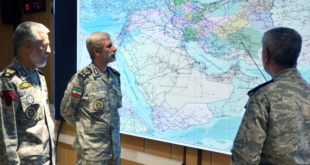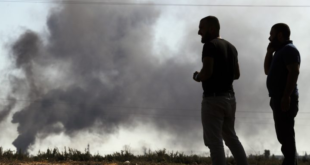After six years of war in Afghanistan and Iraq, American soldiers are deserting their posts at the highest rate since 1980. The number of US army deserters this year shows an 80 per cent increase since the United States invaded Iraq in 2003.The totals remain far lower than they were during the Vietnam War, when conscription was in effect, but they show a steady increase over the past four years and a 42 per cent jump since last year.
“We’re asking a lot of soldiers these days,†said Roy Wallace, director of plans and resources for army personnel. “They’re humans. They have all sorts of issues back home and other places like that. So, I’m sure it has to do with the stress of being a soldier.†The army defines a deserter as someone who has been absent without leave for longer than 30 days. The soldier is then discharged as a deserter.
According to the army, about nine in every 1,000 soldiers deserted in fiscal year 2007, which ended September 30, compared with nearly 7 per 1,000 a year earlier.
Overall, 4,698 soldiers deserted this year, compared with 3,301 last year.
The army has had to bear the brunt of the war demands as many soldiers served repeated, lengthy tours in Iraq and Afghanistan. Military leaders – including aArmy Chief of Staff Gen. George Casey – have acknowledged that the army has been stretched nearly to the breaking point by the combat. Efforts are under way to increase the size of the army and Marine Corps to lessen the burden and give troops more time off between deployments.
“We have been concentrating on this,†said Wallace.
“The army can’t afford to throw away good people. We have got to work with those individuals and try to help them become good soldiers.†Still, he noted that “the military is not for everybody, not everybody can be a soldier.†And those who want to leave the service will find a way to do it, he said.
While the army does not have an up-to-date profile of deserters, more than 75 per cent of them are soldiers in their first term of enlistment, and most are male.
Soldiers can sign on initially for two to six years.
Wallace said he did not know whether deserters were more likely to be those who enlisted for a short or long tour.
At the same time, he said that even as desertions have increased, the army has seen some overall success in keeping first-term soldiers in the service.
There are four main ways that soldiers can leave the army before their first enlistment contract is up:
-They are determined unable to meet physical requirements.
-They are found to be unable to adapt to the military.
-They say they are gay and are required to leave under the so-called “don’t ask, don’t tell†policy.
-They go AWOL, or absent without leave.
According to Wallace, in the summer of 2005, more than 18 per cent of the soldiers in their first six months of service left under one of those four provisions. In June 2007, that number had dropped to about 7 per cent.
The decline, he said, is largely due to a drop in the number of soldiers who leave due to physical fitness or health reasons.
Army desertion rates have fluctuated since the Vietnam War, when they peaked at 5 per cent. In the 1970s they hovered between 1 and 3 per cent, which is up to three out of every 100 soldiers. Those rates plunged in the 1980s and early 1990s to between 2 and 3 out of every 1,000 soldiers.
Desertions began to creep up in the late 1990s into the turn of the century, when the United States conducted an air war in Kosovo and later sent peacekeeping troops there.
The numbers declined in 2003 and 2004, in the early years of the Iraq war, but then began to increase steadily.
In contrast, the Navy has seen a steady decline in deserters since 2001, going from 3,665 that year to 1,129 in 2007.
The Marine Corps, meanwhile, has seen the number of deserters stay fairly stable over that period, with about 1,000 deserters a year. During 2003 and 2004, the first two years of the Iraq war, the number of deserters fell to 877 and 744, respectively.
The air force can claim the fewest deserters, with no more than 56 bolting in each of the past five years. The low was in the budget year 2007, with just 16 deserters.
Despite the continued increase in army desertions, however, an Associated Press examination of Pentagon figures this year showed that the military does little to find those who bolt, and rarely prosecutes the ones they find. Some are allowed to simply return to their units, while most are given less-than-honourable discharges.
“My personal opinion is the only way to stop desertions is to change the climate, … how they are living and doing what they need to do,†said Wallace, adding that good officers and more attention from army leaders could “go a long way to stemming desertions.†Unlike those in the Vietnam era, deserters from the Iraq and Afghanistan wars may not find a haven in Canada. The United States’ northern neighbour was a favourite destination of many draft evaders and deserters seeking a way out of fighting in that unpopular war.
Just this week, the supreme court of Canada refused to hear the appeals of two army deserters who sought refugee status to avoid the war in Iraq. The ruling left them without a legal basis to stay in Canada and dealt a blow to other Americans in similar circumstances.
The court, as is usual, did not provide a reason for the decision.
 Eurasia Press & News
Eurasia Press & News



